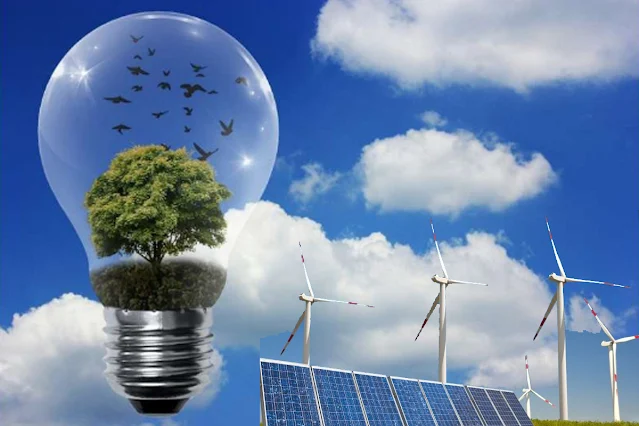Introduction:The Role of Renewable Electricity
In recent years, the aviation industry has been actively seeking ways to reduce its environmental impact and transition towards more sustainable practices. One promising solution that has gained significant attention is sustainable aviation fuel (SAF).
SAF offers the potential to significantly reduce greenhouse gas emissions from aircraft, making it an essential component of the industry's efforts to achieve carbon-neutral growth.
This article explores the crucial role of renewable electricity in the production and development of sustainable aviation fuel.
The Need for Sustainable Aviation Fuel:
Aviation is a vital mode of transportation, enabling global connectivity and economic growth.
However, traditional jet fuels derived from fossil fuels contribute significantly to carbon dioxide (CO2) emissions and other harmful pollutants. The urgent need to address climate change has propelled the search for alternative, sustainable options. Sustainable aviation fuel, made from renewable resources, offers a promising solution by significantly reducing lifecycle greenhouse gas emissions.
Renewable Electricity as a Key Enabler:
Renewable electricity plays a pivotal role in the production of sustainable aviation fuel. One of the most common methods of producing SAF is through the process of electrolysis, where water is split into hydrogen and oxygen using electricity.
This hydrogen can then be combined with carbon dioxide captured from various sources, such as biomass or industrial emissions, to produce synthetic hydrocarbon fuels. The use of renewable electricity ensures that the entire process is powered by clean energy sources, minimizing the carbon footprint of the fuel production.
Integration of Renewable Energy Sources:
The integration of renewable energy sources into the production of sustainable aviation fuel presents numerous advantages. Renewable electricity generated from sources like solar, wind, hydro, and geothermal energy not only reduces carbon emissions but also helps to address concerns related to energy security and price volatility.
By utilizing diverse renewable energy technologies, the aviation industry can establish a sustainable and resilient supply chain for producing SAF.
Collaborative Efforts:
To realize the full potential of renewable electricity in sustainable aviation fuel production, collaboration among stakeholders is essential.
Governments, industry leaders, researchers, and renewable energy providers need to work together to create a supportive policy framework, develop innovative technologies, and invest in infrastructure. Public-private partnerships can facilitate the scaling up of renewable electricity capacity and accelerate the commercialization of sustainable aviation fuel.
Challenges and Opportunities:
While renewable electricity offers significant opportunities for sustainable aviation fuel, several challenges need to be addressed. Scaling up renewable energy capacity to meet the increasing demand for SAF requires substantial investment and robust infrastructure development.
Additionally, optimizing the efficiency of electrolysis and developing advanced carbon capture technologies are critical for enhancing the sustainability of the entire process. Collaboration with other sectors, such as the power industry, can help overcome these challenges and drive the adoption of renewable electricity in sustainable aviation fuel production.
Fact and data of Renewable Electricity
Fact
Renewable electricity refers to the electricity generated from renewable energy sources such as solar, wind, hydro, geothermal, and biomass. Unlike fossil fuels, which are finite and contribute to climate change, renewable electricity sources are sustainable and have a lower environmental impact.
Data on Renewable Electricity:
Global Renewable Energy Capacity: As of 2021, renewable energy accounted for around 29.3% of the world's total electricity capacity. The capacity of renewable energy sources has been steadily increasing over the years.
Solar Power
Solar power is one of the fastest-growing sources of renewable electricity. In 2021, the global solar photovoltaic (PV) capacity exceeded 800 GW, with China, the United States, and Europe leading in installed capacity.
Wind Power
Wind power is another significant contributor to renewable electricity. The global wind capacity reached approximately 743 GW by the end of 2020. China, the United States, and Germany are the top countries in terms of installed wind power capacity.
Hydropower
Hydropower has long been a major source of renewable electricity. It accounts for the largest share of renewable energy generation globally. In 2021, the global hydropower capacity exceeded 1,310 GW, with China, Brazil, and the United States having the highest installed capacities.
Geothermal Energy
Geothermal energy harnesses the heat from the Earth's interior to generate electricity. The global geothermal power capacity stood at around 16 GW in 2020, with the United States, the Philippines, and Indonesia leading in installed capacity.
Biomass Power
Biomass power utilizes organic materials, such as wood, agricultural residues, and dedicated energy crops, to generate electricity. In 2020, the global biomass power capacity was approximately 127 GW, with countries like the United States, Brazil, and Germany having significant installations.
Renewable Energy Investments
Investments in renewable energy have been steadily increasing. In 2020, global investments in renewable power and fuels reached a record $303.5 billion, indicating a growing trend towards renewable electricity generation.
Renewable Energy Jobs
The renewable energy sector provides substantial employment opportunities. In 2020, it employed over 11.5 million people globally, with the solar and wind industries being the largest employers.
The integration of renewable electricity in the production of sustainable aviation fuel holds immense promise for decarbonizing the aviation industry. By leveraging clean energy sources, such as solar, wind, and hydroelectric power, the aviation sector can significantly reduce its carbon footprint and contribute to global climate change mitigation efforts. Governments, industry stakeholders, and researchers must continue to collaborate and invest in the development of renewable energy infrastructure and innovative technologies to accelerate the adoption of sustainable aviation fuel, ultimately paving the way towards a more sustainable and environmentally friendly aviation industry.
These facts and data highlight the global growth and significance of renewable electricity as a sustainable and environmentally friendly source of energy. They demonstrate the increasing capacity and investment in various renewable energy sources, contributing to the transition towards a cleaner and more sustainable energy future.


